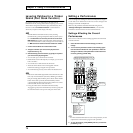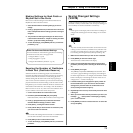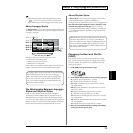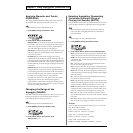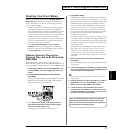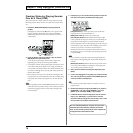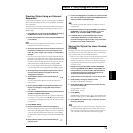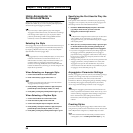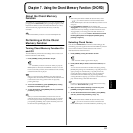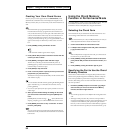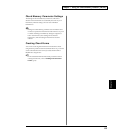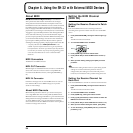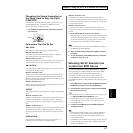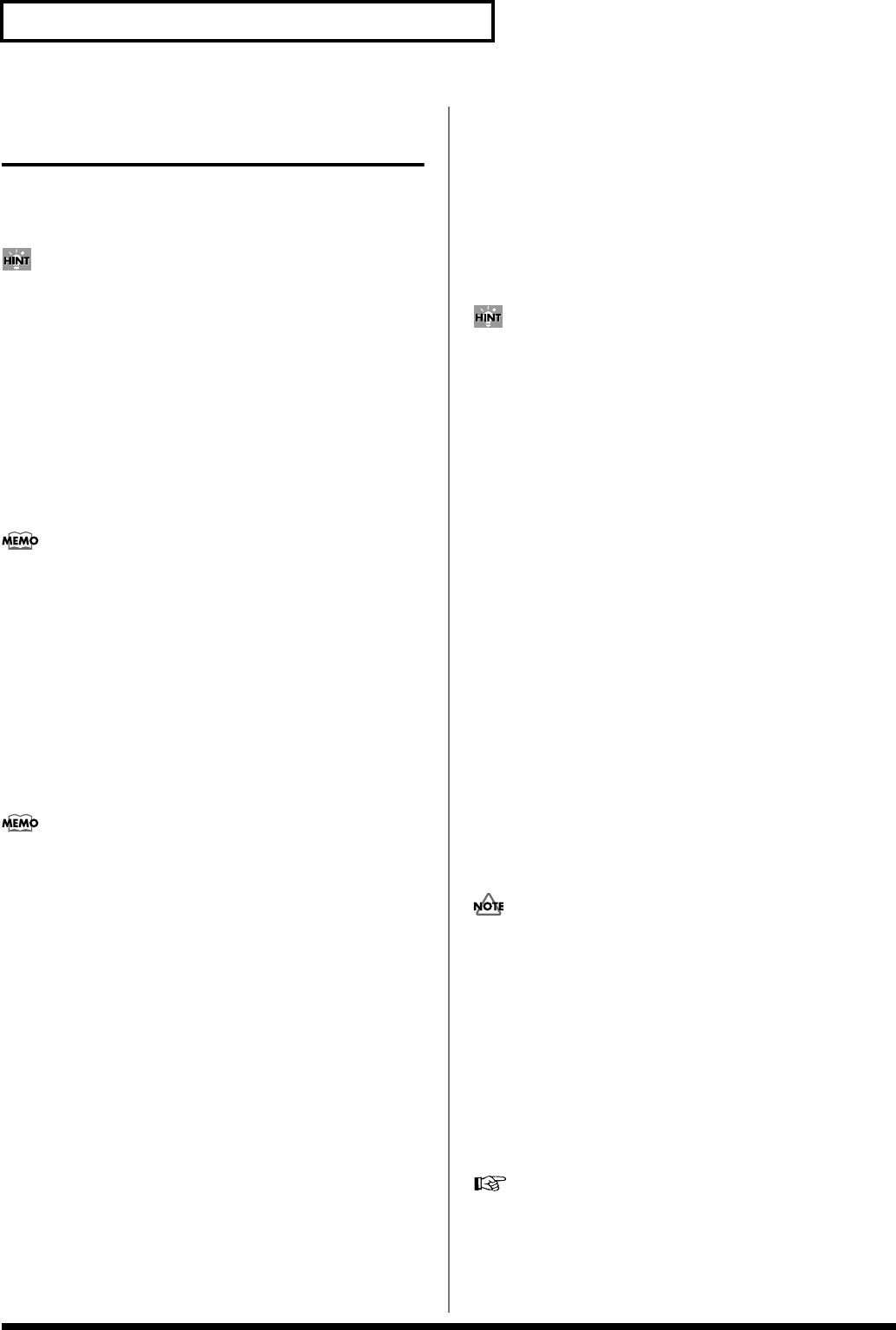
80
Chapter 6. Using Arpeggiator (ARPEGGIATOR)
Using Arpeggiator in
Performance Mode
When using Arpeggiator in Performance mode, by assigning a
Rhythm Set to Part 4/R, you can have rhythm patterns play at the
same time the regular arpeggio is performed.
If you want only a rhythm pattern to play while using the
Arpeggiator in Performance mode, as an alternative to sending a
Note message to the rhythm part, you can play the rhythm
pattern by transmitting a Hold 1 message (MIDI controller
number 64) over the same MIDI channel instead.
Selecting the Style
One Arpeggio Style may be selected for the entire Performance (you
cannot change Arpeggio Styles for each individual Part). However,
by assigning a Rhythm Set to Part 4/R, you can select a Rhythm
Style that differs from the Arpeggio Style.
Arpeggio Styles (11.a–88.a) and Rhythm Styles (11.r–88.r) can be
used both in Performance mode and Patch mode. Even if
different tones are used by a Style with the same number, you
can make settings to Arpeggiator parameters (grid type,
duration, octave range, motif) that can be saved to individual
Patches and Performances, allowing you to make changes in the
Styles that are performed.
When Selecting an Arpeggio Style
1. Confirm that the SH-32 is in Performance mode.
2. Press a Part button [1]–[3] to select a Part 1–3.
If a Patch is assigned to Part 4/R, then you can also select an
Arpeggio Style by selecting Part 4/R.
3. Press [STYLE], causing the indicator to light, then press
[VALUE ▼/▲] to select the Style number (11.a–88.a).
4. Press [EXIT], causing the [STYLE] indicator light to go off.
When Selecting a Rhythm Style
1. Confirm that the SH-32 is in Performance mode.
2. Press Part buttons [4/R] to select a Part 4/R.
3. Confirm that a Rhythm Style is assigned to Part 4/R.
4. Press [STYLE], causing the indicator to light, then press
[VALUE ▼/▲] to select the Style number (11.r–88.r).
5. Press [EXIT], causing the [STYLE] indicator light to go off.
Specifying the Part Used to Play the
Arpeggio
This specifies which of the Parts 1–4/R that is to be played using
Arpeggiator. You can specify only one Part to play arpeggios, and
that setting can be saved to individual Performances.
1. Hold down ARPEGGIATOR [ON] and press a Part button
([1]–[4/R]) to select the Part you want to use with
Arpeggiator; the button’s light comes on.
If a Rhythm Set is assigned to Part 4/R, then you can select Part
4/R in addition to one of the Parts 1–3 to be used with
Arpeggiator. This way, you can simultaneously play an arpeggio
and a rhythm pattern.
2. When you carry out the procedure in Step 1 again, the light
for the Part button that you previously pressed goes off,
and the Part is removed as the subject for the Arpeggiator.
• If you turn on Arpeggiator without any Part being assigned for
the arpeggio performance, [ON] blinks, and no arpeggio is
played. When using Arpeggiator in Performance mode, always
be sure to carry out this step, and specify the Part in which the
arpeggio is to be played.
• Although in this procedure only one Part can be specified for the
arpeggio performance, if the specified Part is in a stack, then
Arpeggiator acts upon all of the stacked Parts. If you do not
want to have the Parts other then the one specified to be played
as arpeggios, do not stack these parts (p. 72).
Arpeggiator Parameter Settings
Basically, Arpeggiator parameters (On/Off, selected Style, grid type,
duration, octave range, motif, tempo) are set the same way as
parameters in Patch mode, and can be saved to individual
Performances. However, although the grid type and tempo settings
are shared by the arpeggios and rhythm patterns, the duration,
octave range, and motif settings are effective only in arpeggios.
Settings for Arpeggiator parameters stored in Patches have no
effect on operations in Performance mode. That is to say, even if
a Patch containing Arpeggiator-related settings is assigned to a
Part in a Performance, those settings do not affect the
Performance, while the settings in Performance mode are
enabled.
Creating Styles
You can also create original Arpeggio Styles in Performance mode
using the same procedure used in Patch mode. If Part 4/R is selected
while a Rhythm Set is assigned to it, a Rhythm Style is created.
For more detailed information about the procedures used for
creating Styles, refer to “Creating Your Own Styles” (p. 77).



